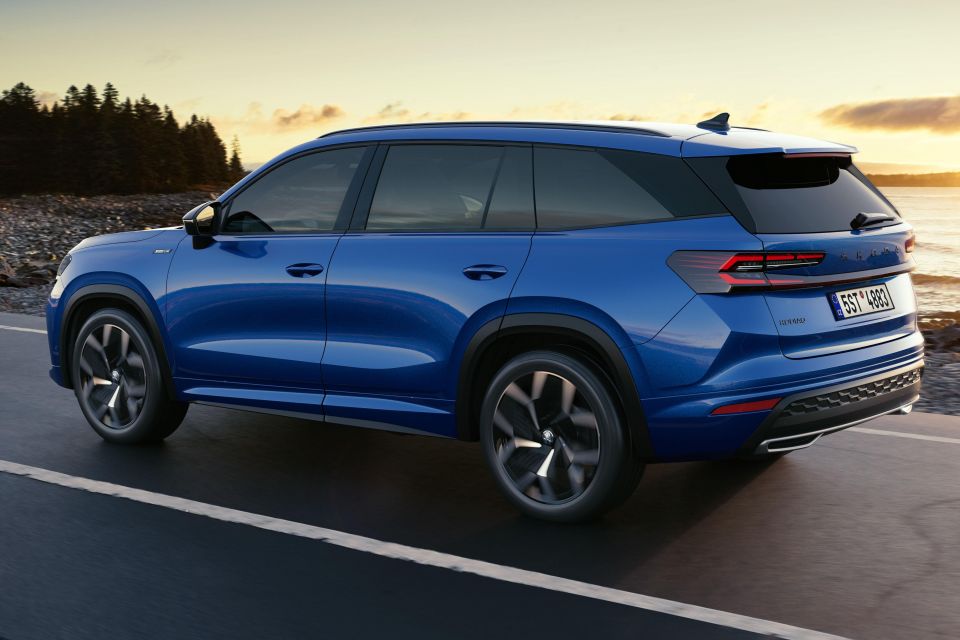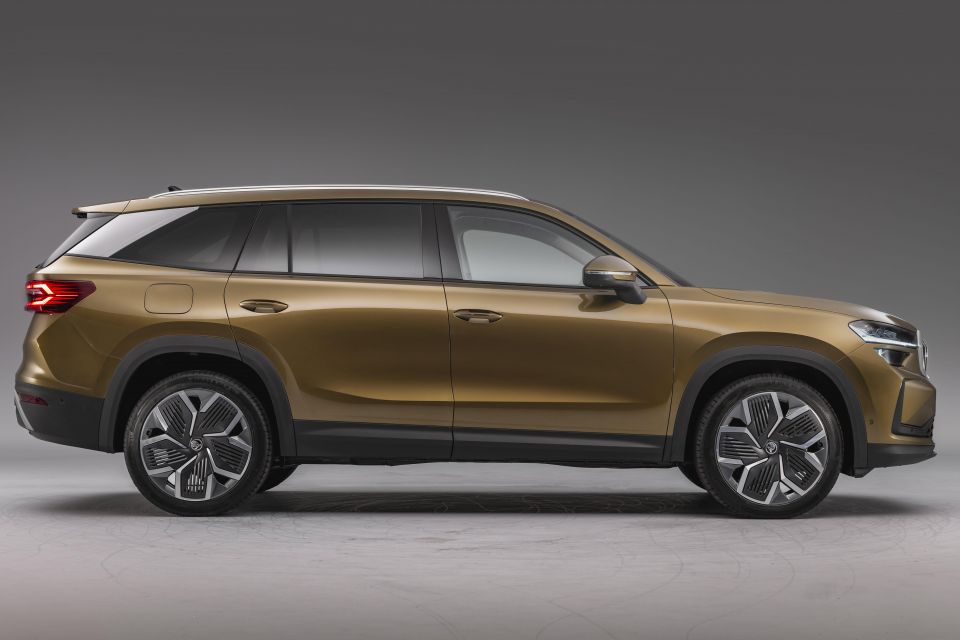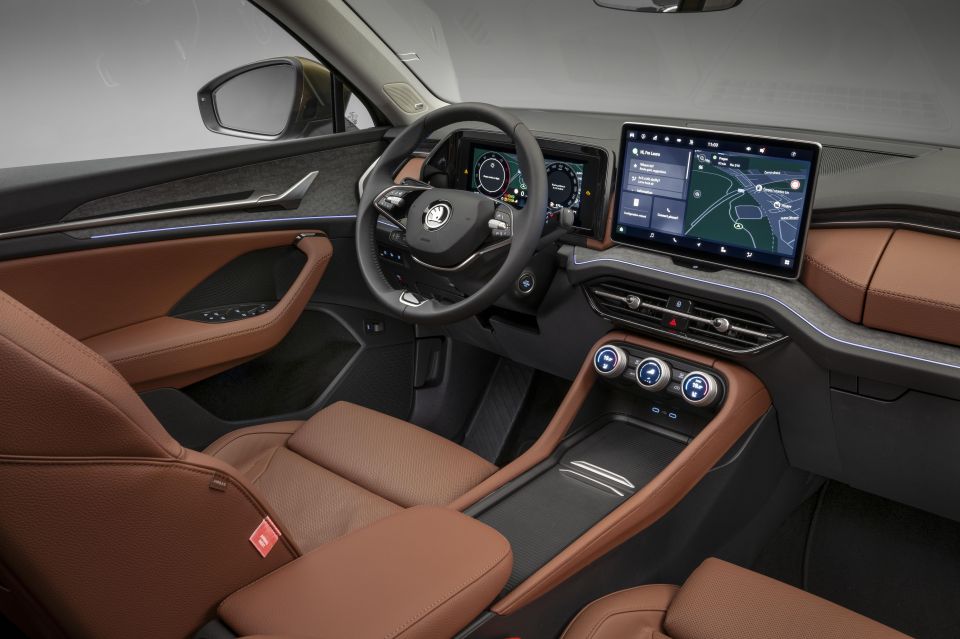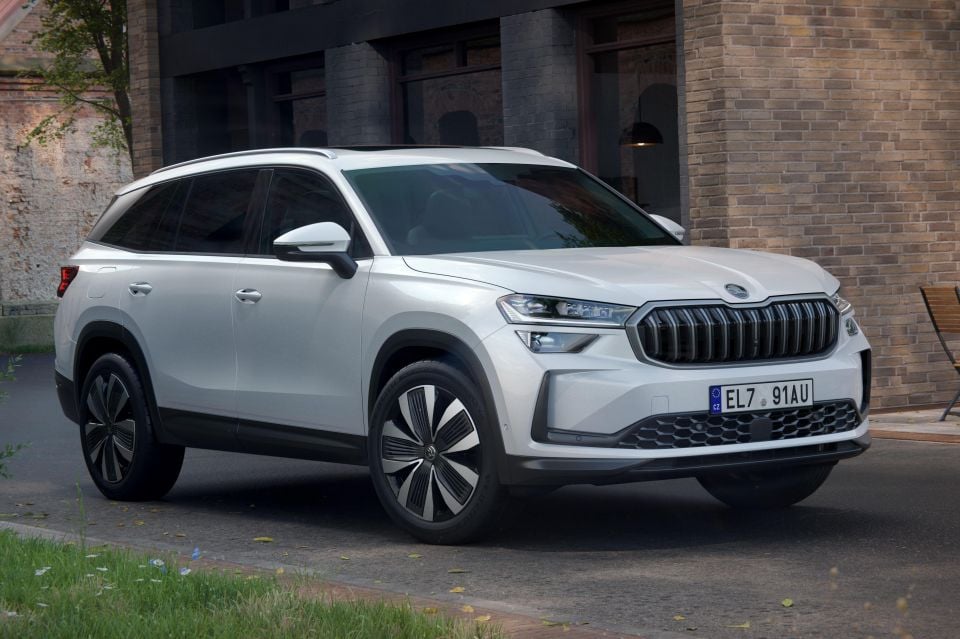

Damion Smy
China bans Tesla-style door handles
2 Hours Ago
Skoda is working on a new Kodiaq RS, which is tipped to remain a turbocharged petrol affair.
Despite the second-generation Kodiaq only having just been revealed, Autocar reports strong sales of the first-generation RS has prompted work to begin on the new hotter model, which could launch as early as 2024.
However, Skoda’s technical development boss Johannes Neft didn’t give much away talking to Autocar, saying only: “We are working on it”.
Mr Neft also said the new performance flagship would “not necessarily” be utilising plug-in hybrid power.

This leaves the venerable EA888 2.0-litre turbocharged four-cylinder petrol engine as the most likely powerplant for the new Kodiaq RS.
The engine powers a wide range of Volkswagen Group products, including the Volkswagen Golf GTI hot hatch. The new Tiguan will also be offered with a 195kW version.
Autocar reports that in the Kodiaq RS the engine could field as much as 200kW, representing a healthy bump over the current model’s 180kW.
The engine is reportedly expected to continue to be mated to a dual-clutch automatic transmission and all-wheel drive system. This should allow the new model to theoretically complete the 0-100km/h sprint in under six seconds.

The new-generation Kodiaq features Skoda’s new DCC Plus Dynamic Chassis Control system, providing a solid base for the hotter RS model to build off.
The new chassis control tech now sees the adaptive dampers receive separate valves for controlling rebound and compression damping independently from each other, affording extra control and precision.
Also expected of the new RS is a unique body kit and interior trim and sports seats, to bolster the sporty look fielded by the Sportline model grade.
The RS will also likely receive stickier rubber.

The next-generation Kodiaq range rides on the same wheelbase as the old model, but differ slightly in exterior dimensions.
Measuring 4758mm long, 1864mm wide, 1659mm tall, and riding on a 2791mm wheelbase, the new Kodiaq is 61mm longer, 18mm narrower, and 17mm taller than the original.
In Europe, the Kodiaq’s petrol engine range comprises a 110kW 48V mild hybrid 1.5-litre turbocharged four-cylinder and a 150kW 2.0-litre turbo four-cylinder.

There are two 2.0-litre turbo-diesel four-cylinder engines on offer, one with 110kW and one with 142kW.
Both the 150kW 2.0-litre petrol and 142kW 2.0-litre turbo-diesel come with all-wheel drive as standard. The petrol and diesel engines are hooked up to a standard dual-clutch automatic transmission.
The headline drivetrain, though, is the Kodiaq’s first plug-in hybrid option, which has already been ruled out for Australia.
Boasting a total of 150kW, the system includes a 25.7kWh battery, and a 1.5-litre turbocharged petrol engine driving the front wheels via a six-speed dual-clutch transmission with a built-in electric motor.

Skoda claims the Kodiaq iV plug-in hybrid has a pure electric driving range of at least 100km using the WLTP standard. The car supports AC charging up to 11kW, and DC fast charging up 50kW.
The previous diesel-powered Kodiaq RS briefly held the fastest Nurburgring lap time for a seven-seater, being piloted by the late Sabine Schmitz.
Its 176kW/500Nm twin-turbo 2.0-litre diesel four was replaced at the Kodiaq’s mid-life refresh with a 180kW/370Nm turbo 2.0-litre petrol four.
MORE: Everything Skoda Kodiaq MORE: 2022 Skoda Kodiaq RS review
Where expert car reviews meet expert car buying – CarExpert gives you trusted advice, personalised service and real savings on your next new car.


Damion Smy
2 Hours Ago


Damion Smy
3 Hours Ago


William Stopford
4 Hours Ago


Matt Campbell
12 Hours Ago


Max Davies
1 Day Ago


William Stopford
1 Day Ago